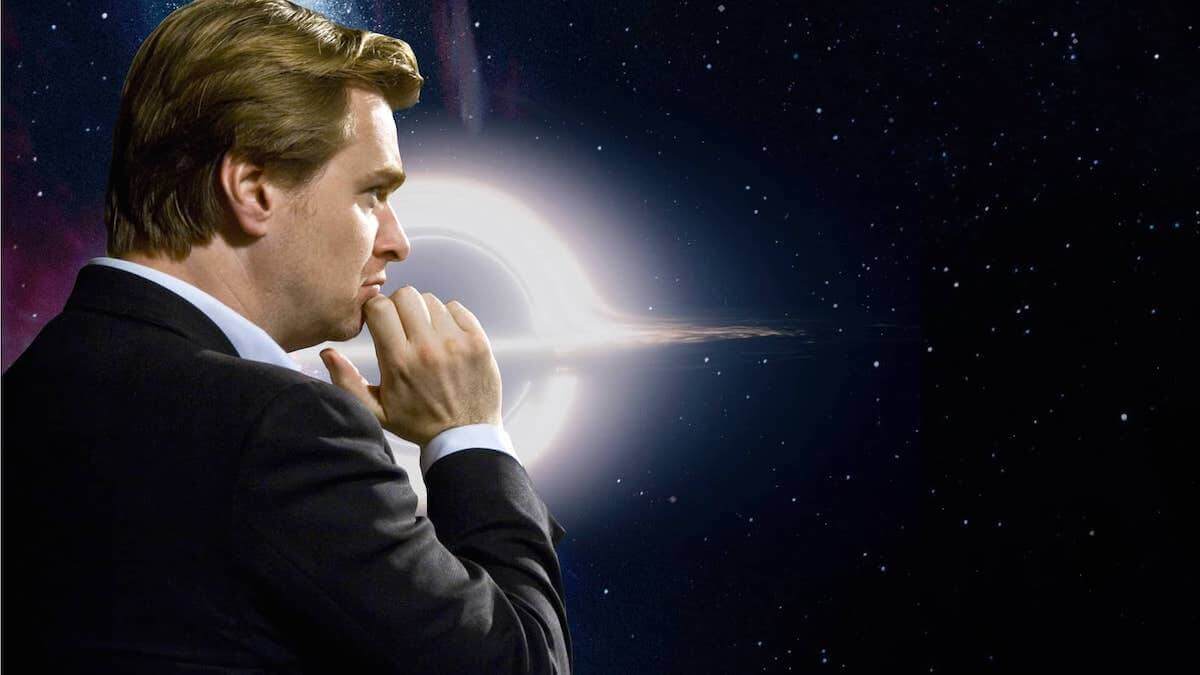Understanding how Christopher Nolan approaches filmmaking is an important step to improving your own skills, but his films are complicated puzzles that are built to confuse and perplex viewers. His use of visual and narrative circles creates intricate and layered films. In this post, we’re going to find the “head of the snake” that governs the overall philosophy of Christopher Nolan’s filmmaking. Let’s jump in.
How Christoper Nolan Warps Sight and Sound
Christopher Nolan Filmmaking
Why Christopher Nolan loves circles
Have you ever heard someone say “History repeats itself”? This comes up quite frequently when researching various Christopher Nolan movies. They’re oddly heavy — you almost have to take a day to let them sink in before you can move on to the next film.
While they are rather tame when compared to Oscar-nominated prestige films or the dark, lurid stories from some of Christopher Nolan’s contemporaries, they’re still pleasantly exhausting.
Why is that?
When you watch a Christopher Nolan movie from start to finish for the first time, you will often experience two somewhat paradoxical concepts:
“I know where we are.”
But also...
“How did we get here?”
This is the unique quality that Christopher Nolan's directing style has developed over the years, and it’s all based around a shape — the circle.
You’ll find circles all throughout his films in dolly moves, VFX composites, barrel rolls, moving sets, black holes, diagrams, and in his story structure.
Now, circles have always been an integral part of the storytelling process, from Joseph Campbell to Dan Harmon, and we have an entire post devoted to the use of the story circle for your story structure.
Nolan approaches the circle from every angle (pun intended): He looks at how Carl Jung uses circles to represent the human psyche. There is a conscious and unconscious mind that exists in all of us.
Carl Jung's Human Psyche
Christopher Nolan looks at the circular concepts of time and space.
Where does time begin and end? Where does space begin and end?
What about the circle of life? Our carbon-based bodies decompose and give life to other organisms, and so on, and so forth. The laws of physics tell us that no energy source can truly be destroyed, but rather distributed to another area in space. Each action has an equal and opposite reaction.
Instead of devoting his life to studying these concepts for the purposes of science and academia, Nolan has decided to exemplify these concepts through stories and his story structure. This is why films like Inception and Interstellar are riddled with physics and Jungian concepts.
In this script breakdown for Interstellar, we find Nolan starting and ending his sci-epic with symbols of hope. By bookending the plot, we again confront the idea of circles and how time and space can be bent in that shape for dramatic purposes. Watch this video for a complete script analysis for one of the best sci-fi movies ever made.
Interstellar Ending Explained • Subscribe on YouTube
Even The Dark Knight has a large nod to the idea that you can’t have an action without an equal and opposite reaction, with mentions of unstoppable forces that collide with immovable objects. All while the camera does a barrel roll to show the world has been turned on its head.
Up is down, right and wrong are intertwined, yesterday is today and tomorrow has already happened, and the circle continues on and on. If you saw Nolan's recent mind-bender, you know this is what Tenet is about as well.
Ever heard of ouroboros? This concept seems even more apparent when we consider Tenet, which has a title that is, itself, a palindrome.
Related Posts
Christopher Nolan Motif
How Christopher Nolan uses motifs
Christopher Nolan's filmmaking process often includes disguising story clues inside an important cinematic devices known as a motif. A motif is a repeated pattern used to support the theme of a film, like for instance, the totems in Inception that represent reality, or the various symbols of duplicity in The Prestige.
These items are heavy with symbolism, but Nolan takes it a step further by using these motifs as a plot device, character device, theme device, and in some rare cases as a device for representing a setting. The spinning top during Inception's puzzling ending, for example, is a great use of motif and symbol.
One of Nolan's dominant motifs is time. In this video, we break down how use injects time into the structure, dialogue, production design, and even the soundtracks to make you see, hear, and feel time.Nolan & Time • Subscribe on YouTube
Using motif in this way both creates intrigue and confusion, and Christopher Nolan does this by presenting information with a veiled context, which act as critical clues that Christopher Nolan peppers into the story at optimal moments.
What do you mean my optimal moments?
Nolan spreads these clues out just enough to disguise the revelation but doesn’t spread them so much that you completely miss out on their significance, like the latex gloves in Insomnia.
There is a flashback sequence peppered throughout where an obscured figure wearing latex gloves and attempts to clean blood spots off their shirt cuff. Because we're so enveloped in the murder investigation, we naturally assume that the latex gloves belong to Kay's murderer.
The truth is that they are completely unrelated.
The significance of the latex glove shot comes from a previous time that Dormer wore these same types of gloves, and with the proper context, we learn Dormer’s circumstances, and character motivation.
Check out the complete shot list here:
Visual Motif in Insomnia • Shot List Made in StudioBinder
Nolan makes sure that he only makes a film once he has a good script.
While this helps him a lot, what makes Nolan a truly great director is that he takes the concepts on the page and finds a thoughtful way to enhance them through the medium of cinema. Nolan's shot list is often populated with dazzling yet meaningful choices.
Christopher Nolan Story Structure
Nolan’s structure and bookending
What makes Christopher Nolan films so unique is that he reinforces his method of storytelling with the two main aspects of cinema:
Sight and Sound.
Nolan talks about how his new take on the structure for Dunkirk was based on the Shepard Tone, which is a sound that seems to continually build to no end. The tone revolves around itself, climbing the scale only to come back around to where it began, like a loop, or a circle.
How the Shepard Tone Works
This same tone has been implemented into the score for every Christopher Nolan film since The Prestige because he knows how emotion is closely tied to music, and rather than merely see the circles in his films, he wants the viewer to also feel the story concept.
Nolan also really enjoys “bookending” his scenes and films. Bookending is where the beginning and end share something identical.
It can be dialogue, props, color schemes, shot sizes, camera movement, or be a replay of an entire scene. What’s great about bookending is that it forces you to survey your story to ensure thematic consistency.
One of Nolan's other ways to bookend his movies is with a montage. Consider the opening shots from The Prestige and how those images come back in the end. Here's a breakdown of how Nolan uses montage to end his films and other ways he elevates this storytelling device.
How Christopher Nolan Uses Montage • Subscribe on YouTube
Showcase your vision with elegant shot lists and storyboards.
Create robust and customizable shot lists. Upload images to make storyboards and slideshows.

